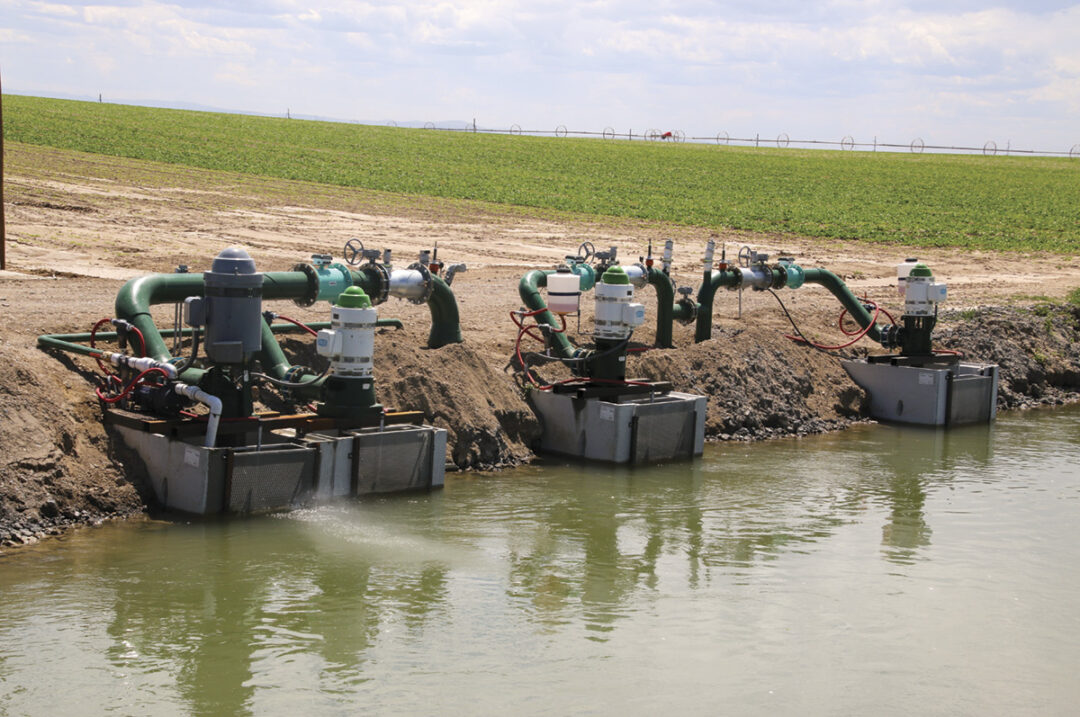North Side Pumping Co., based in Hazelton, recently completed a $4.1 million irrigation efficiency project that spans 4,600 acres and benefits 30 producers in the Magic Valley. This initiative aims to enhance water and energy efficiency by replacing an outdated delivery system with state-of-the-art infrastructure.
Parley Hinton, project manager for North Side Pumping Co., shared insights into the project’s development: "It's been about three years in the making. It took roughly a year to develop the concept and design, another year to secure funding and a final year to get everything procured, installed and operational."
The project involved installing 16.8 miles of buried PVC pipeline, ranging from 2 to 15 inches in diameter, and 30 new pumping stations equipped with advanced variable-frequency drives (VFDs). These small-scale pump stations, ranging from 5 to 150 horsepower, replace the old system dating back to 1929. The new infrastructure eliminates the need for 14.5 miles of irrigation lateral canals, significantly reducing maintenance requirements.
“It’s the cream of the crop as far as irrigation systems go,” Hinton notes. "The VFDs are all touch panel, and pressures and settings can easily be adjusted."
Randy Grant, a farmer in the Hazelton and Eden area who grows alfalfa, beans, corn, barley, sugarbeets and potatoes under the farm name Grant and Hagen, expresses strong support for the new system. "Oh, 100 percent behind it. You know, we could use less water; therefore, we're more efficient in the end. I've been behind it totally all the way. We were losing water to the environment that we didn't need to," Grant says.

These pumps date back to 1929 and are now retired. Photo by Cassidy Woolsey.
The previous system, relying on pumps and pipelines from the early 20th century, had surpassed its expected lifespan. "We've been using pumps from 1929 and main pipelines that were converted from wooden to steel," Hinton explains. "Most of the other systems that are operating are 1960s-era technology, and we’re 30 to 40 years earlier than those. Our system had already gone through a full lifespan.”
Sourcing spare parts proved to be a significant challenge, given that they had to be specially machined due to the equipment's age. "Without federal and state funding, this project would have never gotten off the ground," Hinton emphasizes. "We were getting to the point that our pipelines were starting to rust, and we were having to repatch and repair all the time. Sooner or later, they were going to fail on us, and it would’ve been a catastrophic failure with pretty significant crop damage.”
Securing funding was critical to the project's success. The $4.1 million project was partially funded by a $951,800 Aging Infrastructure Grant from the Idaho Water Resource Board, a $2 million grant from the Bureau of Reclamation WaterSmart program and a $150,000 grant from the Water Quality Program for Agriculture. Local producers contributed $213,588 in cost-share funds.

A project map shows the layout of canals and new pipelines installed. I-84 runs right through the middle of the project area. Photo courtesy of North Side Pumping Co.
Navigating the bureaucratic landscape posed another hurdle. "The biggest challenge was getting through the Bureau of Reclamation's NEPA (National Environmental Policy Act) studies and clearances," Hinton says. "We started in January and hoped to begin construction by October, but the process extended until right after Thanksgiving."
The modernization project is set to bring numerous benefits, including annual water savings of approximately 6,300 acre-feet. Additionally, the VFD pumps are expected to provide energy savings of 15% to 20%, reducing power costs for both North Side Pumping Co. and local farmers.
"The pump company won’t be charging any grower maintenance on these anymore," Hinton says. "So that money – that 20 to 30 percent – that they’re going to have to put in, they’ll return that usually in the first three years. Right now, I charge 55 dollars an acre per share, plus the canal company has a 28-dollar charge for their water. After this, I won’t be charging that 55 dollars anymore. So that’s where their cost savings is. Once their projects [are] paid off, they won't have to pay that anymore, and it just makes their cost of farming a lot cheaper."

Butte Irrigation dug deep trenches for the pipeline installation in an area that locals say has fewer rocks under the ground than many areas in the valley, making it easier going for the contractor. Photo by Steve Stuebner.
Butte Irrigation, the contractor for the project, was credited for their excellent work. "They started in early December and finished by May 10th, laying 88,000 feet of pipe and installing 30 new pump stations. It was a crazy winter, but we got it done, and I believe everyone is happy."
Grant also shared his satisfaction with the system despite initial challenges. "Yes, I am satisfied. I knew there were going to be headaches and startup pains, but we got through them reasonably well. Everything's up and running good right now. All the systems that we have are running optimally. So far, it's been a win-win, and I look forward to it continuing to be a win-win."
This is the fourth of five stations to be modernized in recent years. Hinton is currently in the process of securing funding for the final station, with about 12 growers showing interest in similar upgrades. This station will source water directly from Milner Dam, eliminating 19 miles of canal, allowing it to be pressurized into a 3.5-mile pipeline to serve all users.




.jpg?t=1687979285&width=640)



